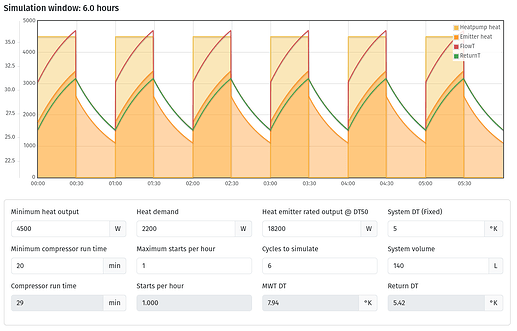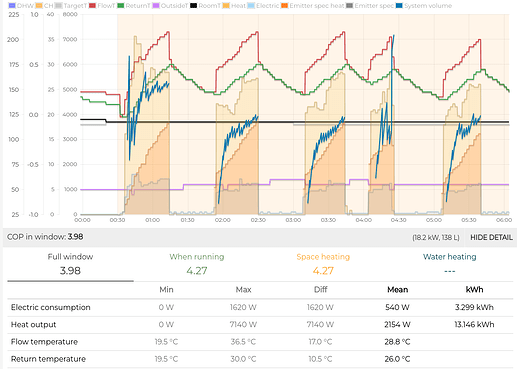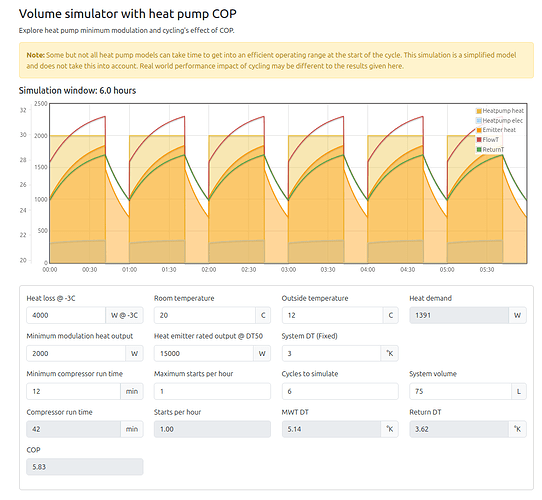It feels like there is some similarities with the conversations going on over on Something has gone quite wrong with my 8kW Daikin today! - #86 by johncantor
I’ve created a simple system volume simulator tool here, I was trying to get my head around starts per hour, minimum system run time etc, Il try and do a longer post about it soon: https://openenergymonitor.org/tools/volume_sim.html.
That tool is great.
However would it be possible instead of setting a number of cycles an hour to be able to set a min temperature where the heat pump starts a new cycle and a max temperature where it exceeds the setpoint hysteresis so ends the cycle. That’s how my Ecodan appears to operate.
That would then help to show the effect of changes to volume on the length of time between cycles and cycles would always be starting from the same temperature.
Great tool, matches the behaviour I see quite well.
How about changing “Cycles to simulate” to “Period to simulate”, defaulted to 6 hours? I feel this makes it easier to compare when switching between different scenarios. Then the title above the chart would say how many cycles it’s showing.
Some heatpumps will often boost at the start of the cycle to get up to flow temperature, meaning a shorter cycle or ending at a higher flow temperature. Not sure if that’s something you want to model though.
Is this assuming some fixed indoor temperature? Could that be an input?
Here’s model of my system, compared to actual running:
https://emon.cryosphere.co.uk/ashp?mode=power&cop=1&start=1731369480&end=1731391470
Apologies for the slow reply @Timbones
I needed to fix by an integer number of cycles to make the wrapping of the simulation around work. It would in theory be possible to time limit but still to the simulation on a number of cycles by discarding some data to make that work though I guess.
Yes this is more a simplified model of a heat pump, agreed that that’s the real behavior in many cases.
Yes a fixed room temp of 20.
I have since made a more complex version of this simpler simulator that also includes a simple model of the COP impact https://openenergymonitor.org/tools/volume_sim_cop.html this version allows room temp and other parameters.
The theoretical COP impact based on having to overshoot a steady state flow temp is generally quite small but again this simple treatment of cycling using carnot COP equation does not capture real world refrigeration cycle dynamics, e.g our observation based on real world data that some heat pumps take some time to settle into an efficient operating regime whilst others seem to give good results withing 10s of seconds …
I just posted about Daikin heat pumps elsewhere.
It has always been an annoyance for me, how long they take to settle down.
My experience is that it is often hours before they get to the efficiency that other heat pumps get to almost immediately.
Agreed, thanks @matt-drummer
Have anyone got data on how UFH changes affective system volume?


